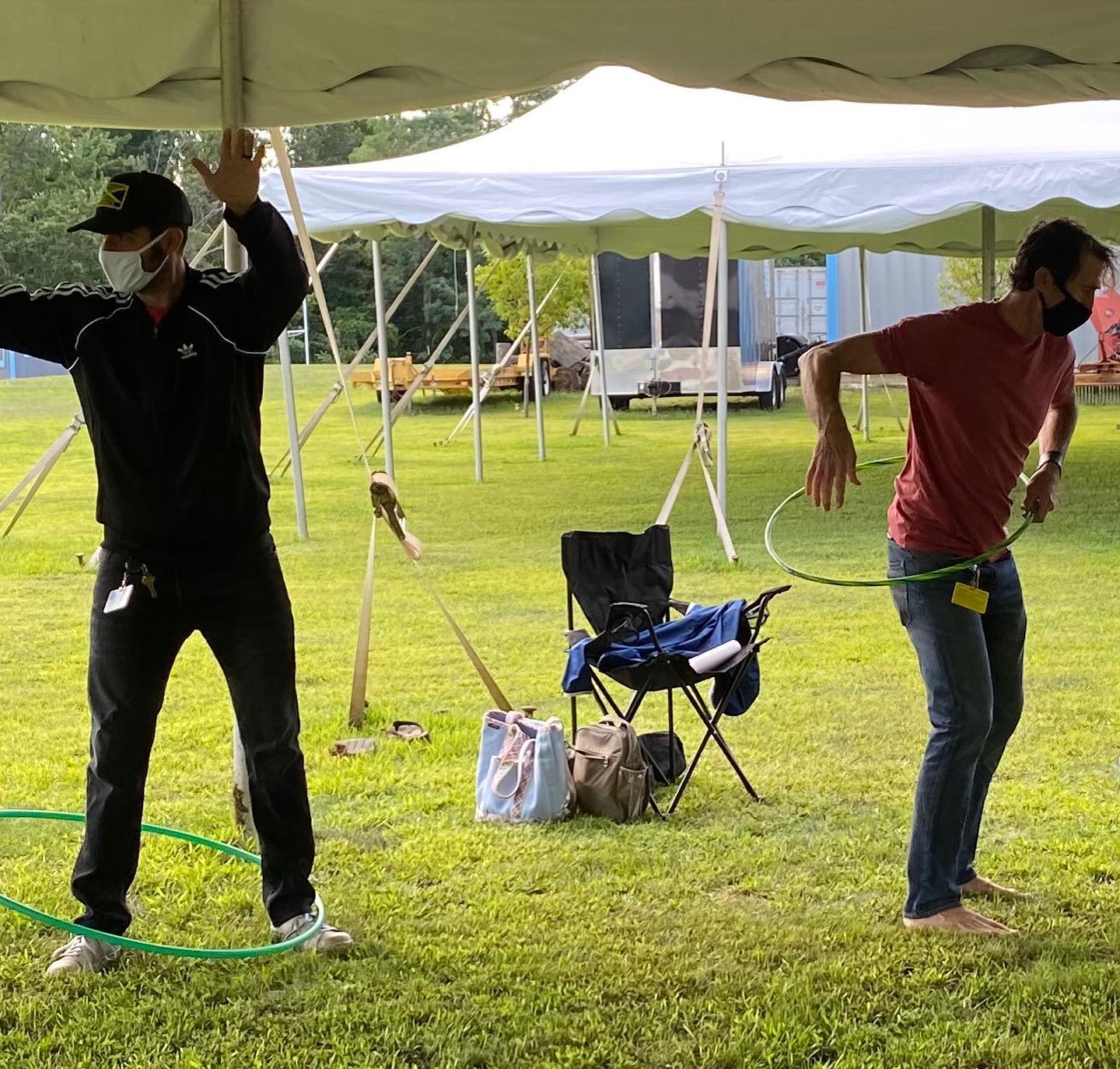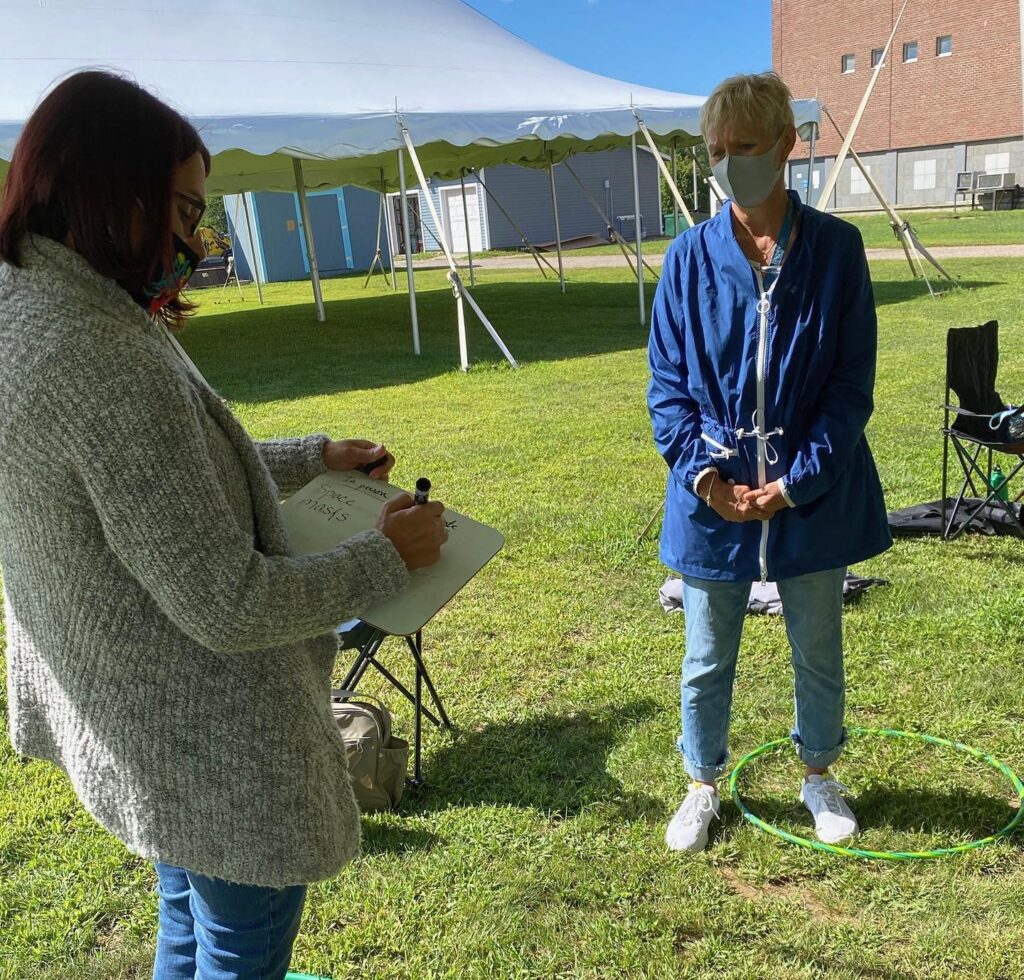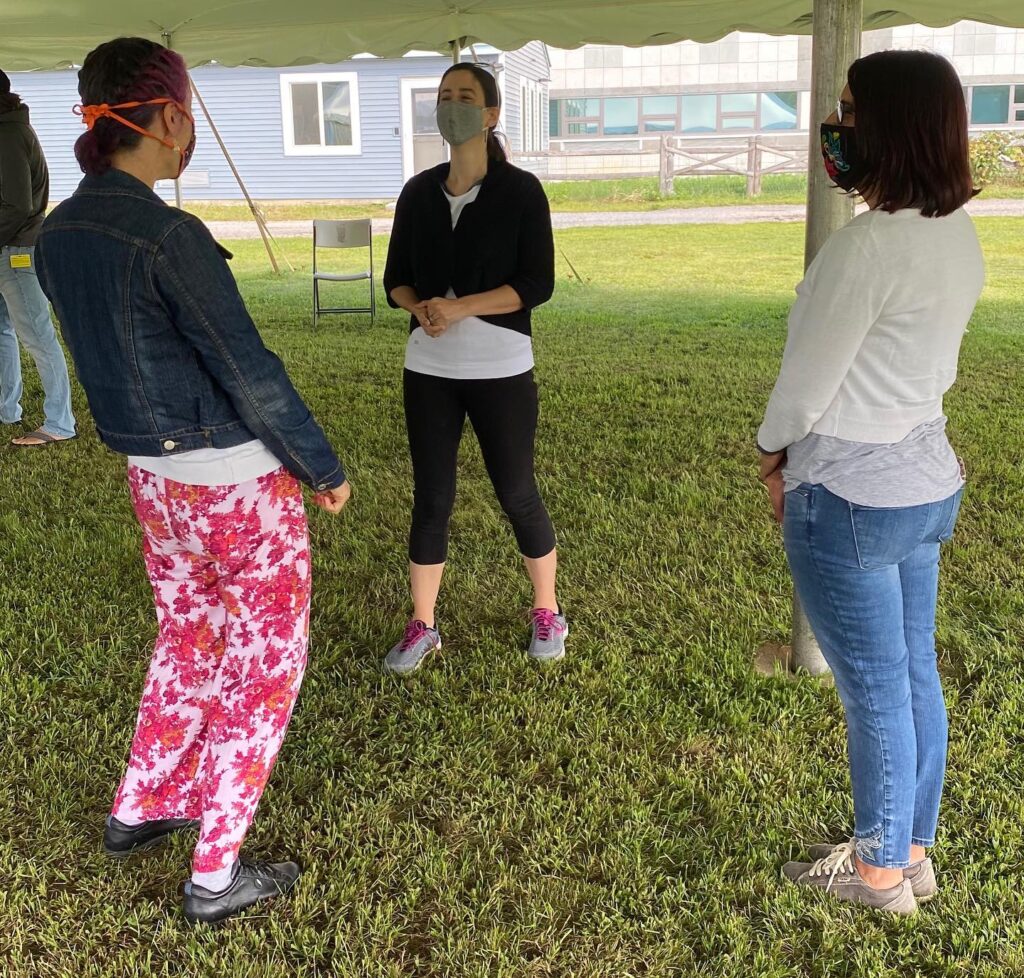
I recently had the opportunity to collaborate with the South Burlington School District in Burlington, VT on one of their professional development days before returning to school in a hybrid manner. Following the Vermont State Guidelines and the District’s guidelines for learning, we were able to connect, build community, and collaborate on Social Emotional Learning techniques, PPATH in a socially distant classroom, and the importance of proficiency in the 2020-21 School Year.
This was the first time the teachers had been together since March, and their first time back at school! Their energy and excitement to see one another was beautiful. South Burlington School District is encouraging as many classes outside as possible, so we were able to be under one of the large event tents that the High School has installed to encourage outdoor learning this Fall.

Takeaways:
- We could have spent the entire day building community. Our teachers and our students need time to reconnect with one another. Giving guided pairings and groupings with specific prompts provided the opportunity for each teacher to connect with one another and stay in a positive mindset as we reflected on our Stay-At-Home Experiences.
- Creating group norms that everyone has buy-in on is essential. As soon as I arrived you could feel the anxiety of: “do I or don’t I wear my mask”. Instead of steamrolling through and going over the content we had pre-planned together, we implemented a stationary spectrum activity to gauge everyone’s comfort level with movement, pairings and groupings, and when and when we do not need to wear our masks. From there, the group shared ideas on what a norm could be, and we voted with a thumb up, to the side, or down. When we had our norms: masks on when we’re moving, masks on when we’re in a pairing or grouping, mask can come off if you are stationary and six feet away from others; each individual in the group was incredibly respectful to the norms that were created.
- Our brains and bodies are learning to re-wire themselves for our new lifestyle; give yourself and your students lots of patience and grace . In a traditional workshop prior to COVID-19, more content was covered in a day. However, as we are transitioning again for the third time in six months, our brains are working so hard to keep all of the guidelines intact, that learning becomes a secondary or tertiary component to the classroom. Short, sweet, and simple is the way to go as we are building our stamina up again for in person instruction.

Lessons Learned:
- Face Shield is the way to go. I was unaware of how much context cues I receive from others while they are talking. When a mouth is covered, and at a six foot distance, it is hard to hear others clearly and read people’s moods/emotions correctly. A face shield can take away some of the barriers in terms of comprehension and affect.
- I wish I had my microphone and speaker with me. An outdoor or socially distant workshop means that my voice needs to be heard from farther distance and with a lot more background noise (tractors, airplanes, tennis games, you name it!)Elevating my voice through a bluetooth speaker would have helped everyone with understanding my prompts and learning Swedish.
- Teachers (and students!) are hungry for knowing and structure. And though we can’t supply that, we can supply growth mindset, emotion checks, and lots of positive affirmations. I noticed that it was easy for teachers to fall into their dilemmas over and over- and this is completely understandable as no teacher got a break this summer and they are emotionally spent before school even starts. Guiding teachers through finding “how can I statements”, checking in with how they actually felt and honoring that, and providing lots of praise and socially distant connections, teachers were able to learn and grow together.
I am hopeful that this cohort of language teachers will begin the year in a safe and engaging way. They support one another and they care about their students. At the end of the day, that is all we really need to thrive in the Socially Distant Learning Environment.

